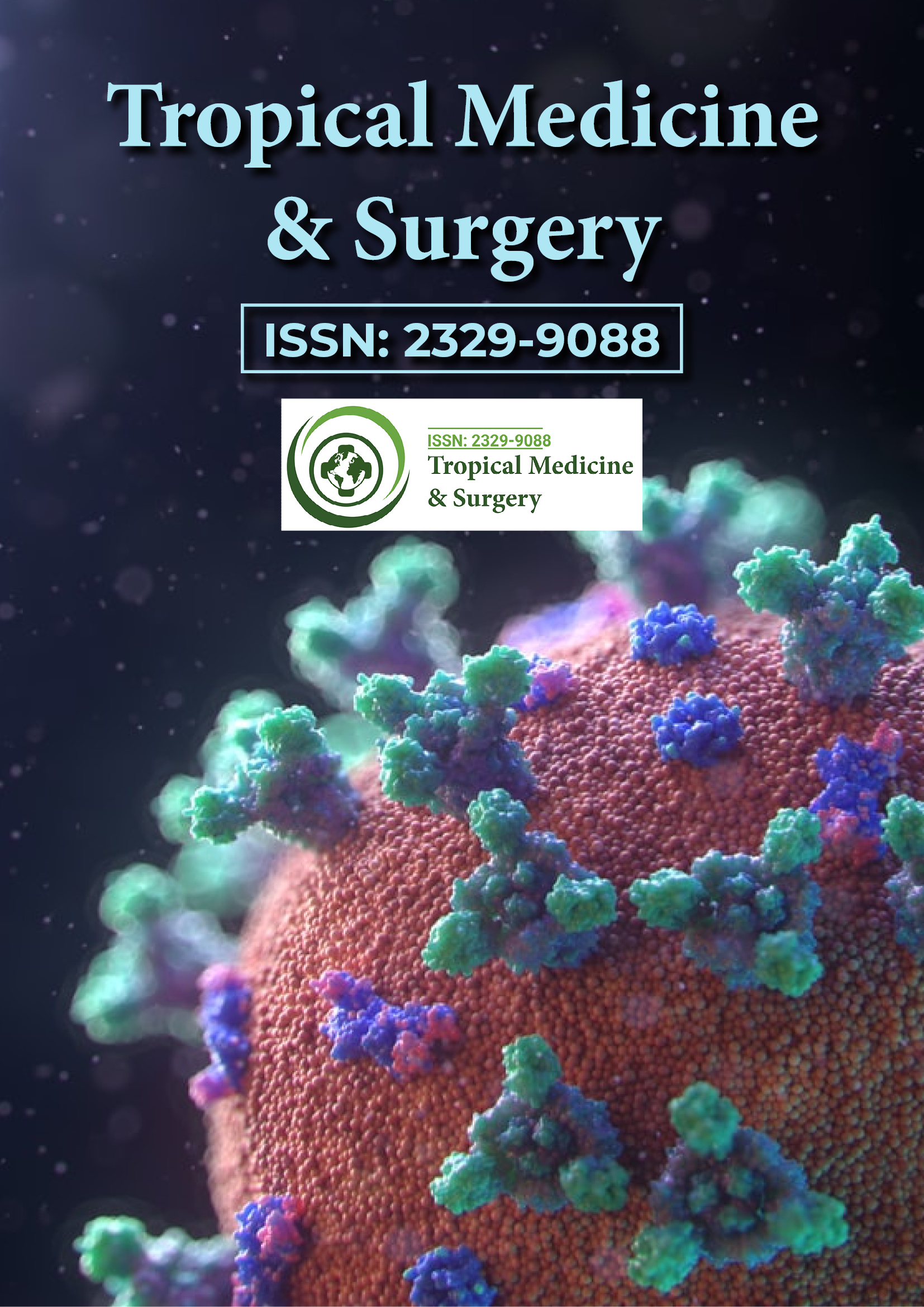Indexed In
- Open J Gate
- Academic Keys
- RefSeek
- Hamdard University
- EBSCO A-Z
- OCLC- WorldCat
- Publons
- Euro Pub
- Google Scholar
Useful Links
Share This Page
Journal Flyer

Open Access Journals
- Agri and Aquaculture
- Biochemistry
- Bioinformatics & Systems Biology
- Business & Management
- Chemistry
- Clinical Sciences
- Engineering
- Food & Nutrition
- General Science
- Genetics & Molecular Biology
- Immunology & Microbiology
- Medical Sciences
- Neuroscience & Psychology
- Nursing & Health Care
- Pharmaceutical Sciences
Opinion Article - (2024) Volume 12, Issue 4
Chagas Disease in Transplant Patients and the Risk of Reactivation
Catalina Olivera*Received: 25-Nov-2024, Manuscript No. TPMS-24-28039; Editor assigned: 27-Nov-2024, Pre QC No. TPMS-24-28039 (PQ); Reviewed: 11-Dec-2024, QC No. TPMS-24-28039; Revised: 18-Dec-2024, Manuscript No. TPMS-24-28039 (R); Published: 26-Dec-2024, DOI: 10.35248/2329-9088.24.12.374
Description
Chagas disease, caused by the protozoan Trypanosoma cruzi, remains a significant public health concern, particularly in Latin America. Its clinical manifestations vary widely, ranging from asymptomatic cases to severe chronic complications involving the heart and gastrointestinal tract. Reactivation of Chagas disease in immunocompromised individuals, such as organ transplant recipients, is a serious and often overlooked concern.
Overview of chagas disease
Chagas disease is transmitted primarily through the feces of infected triatomine bugs, although other modes of transmission include blood transfusion, organ transplantation and congenital infection. The disease progresses in two phases: Acute and chronic. While the acute phase often resolves spontaneously, the chronic phase can lead to serious complications, particularly in the cardiac and gastrointestinal systems.
In heart transplant patients, immunosuppression therapy increases susceptibility to infections and reactivation of latent infections, including Chagas disease. Reactivation typically involves parasitemia and organ-specific manifestations, posing significant risks to patient outcomes.
Immunosuppression and disease reactivation
Heart transplantation is a life-saving procedure for individuals with end-stage cardiac diseases, including Chagas cardio- myopathy, a leading cause of heart failure in endemic regions. However, the immunosuppressive regimens required to prevent graft rejection weaken the immune system, increasing the risk of infectious complications, including the reactivation of T. cruzi.
Reactivation occurs when T. cruzi, previously controlled by the immune system, proliferates unchecked due to reduced immune surveillance. This can result in systemic or localized manifestations, including myocarditis, meningoencephalitis, or, less commonly, cutaneous involvement.
Chagas disease reactivation with cutaneous vasculitis
A heart transplant recipient with a history of chronic Chagas disease presented with fever, skin lesions and systemic symptoms. The patient had been on immunosuppressive therapy, including corticosteroids and calcineurin inhibitors, to prevent graft rejection. Clinical examination revealed purpuric lesions on the lower extremities, suggestive of vasculitis.
Laboratory investigations showed elevated inflammatory markers and blood smear analysis confirmed the presence of T. cruzi trypomastigotes, indicating reactivation. Skin biopsy of the lesions demonstrated vasculitis with perivascular infiltration by inflammatory cells and the presence of T. cruzi amastigotes, confirming the diagnosis of Chagas disease reactivation associated with cutaneous vasculitis.
Diagnosis of reactivation in transplant patients
Diagnosing Chagas disease reactivation in transplant recipients requires a high index of suspicion, particularly in patients from endemic regions or those with a history of T. cruzi infection. Key diagnostic tools include.
Microscopic examination: Detection of T. cruzi in peripheral blood or tissue samples.
Polymerase Chain Reaction (PCR): A highly sensitive and specific method for detecting T. cruzi Deoxyribonucleic Acid (DNA), especially in cases with low parasitemia.
Histopathology: Identification of amastigotes in tissue biopsies, as seen in this case.
Serological tests: While useful for diagnosing chronic infection, serology is not reliable for detecting reactivation due to persistent antibody levels from prior infection.
Timely diagnosis is essential to guide therapeutic decisions and improve outcomes in transplant patients.
Management strategies
Treatment of Chagas disease reactivation in immunocompromised patients requires a combination of antiparasitic therapy and careful management of immunosuppressive regimens. The primary goals are to eliminate T. cruzi parasitemia and control the inflammatory response associated with organ involvement.
Antiparasitic therapy: Benznidazole or nifurtimox are the mainstay treatments for acute Chagas disease and reactivation. These drugs target the replicative forms of T. cruzi and help reduce parasitemia. In transplant patients, therapy should be initiated promptly upon diagnosis to prevent disease progression.
Immunosuppression adjustment: Reducing the intensity of immunosuppressive therapy, when feasible, may enhance the patient’s ability to control the infection. However, this must be balanced against the risk of graft rejection, requiring close monitoring and multidisciplinary coordination.
Supportive care: Managing systemic symptoms and complications, such as fever and skin lesions, is an integral part of the treatment plan. Wound care and, in severe cases, surgical interventions may be necessary for extensive cutaneous lesions.
Long-term monitoring: Regular follow-up is essential to assess treatment response, detect potential relapses and manage chronic complications of Chagas disease, including cardiac and gastrointestinal involvement.
Conclusion
Chagas disease reactivation in immunocompromised patients, such as heart transplant recipients, poses significant health risks. Early diagnosis through advanced diagnostic tools, prompt initiation of antiparasitic therapy, and careful management of immunosuppressive regimens are essential for improving patient outcomes. Preventive measures, including screening, prophylaxis, and education, play a vital role in reducing the risk of reactivation and associated complications, emphasizing the importance of multidisciplinary care and regular follow-up in managing this serious condition.
Citation: Olivera C (2024). Chagas Disease in Transplant Patients and the Risk of Reactivation. Trop Med Surg. 12:374
Copyright: © 2024 Olivera C. This is an open-access article distributed under the terms of the Creative Commons Attribution License, which permits unrestricted use, distribution, and reproduction in any medium, provided the original author and source are credited.
